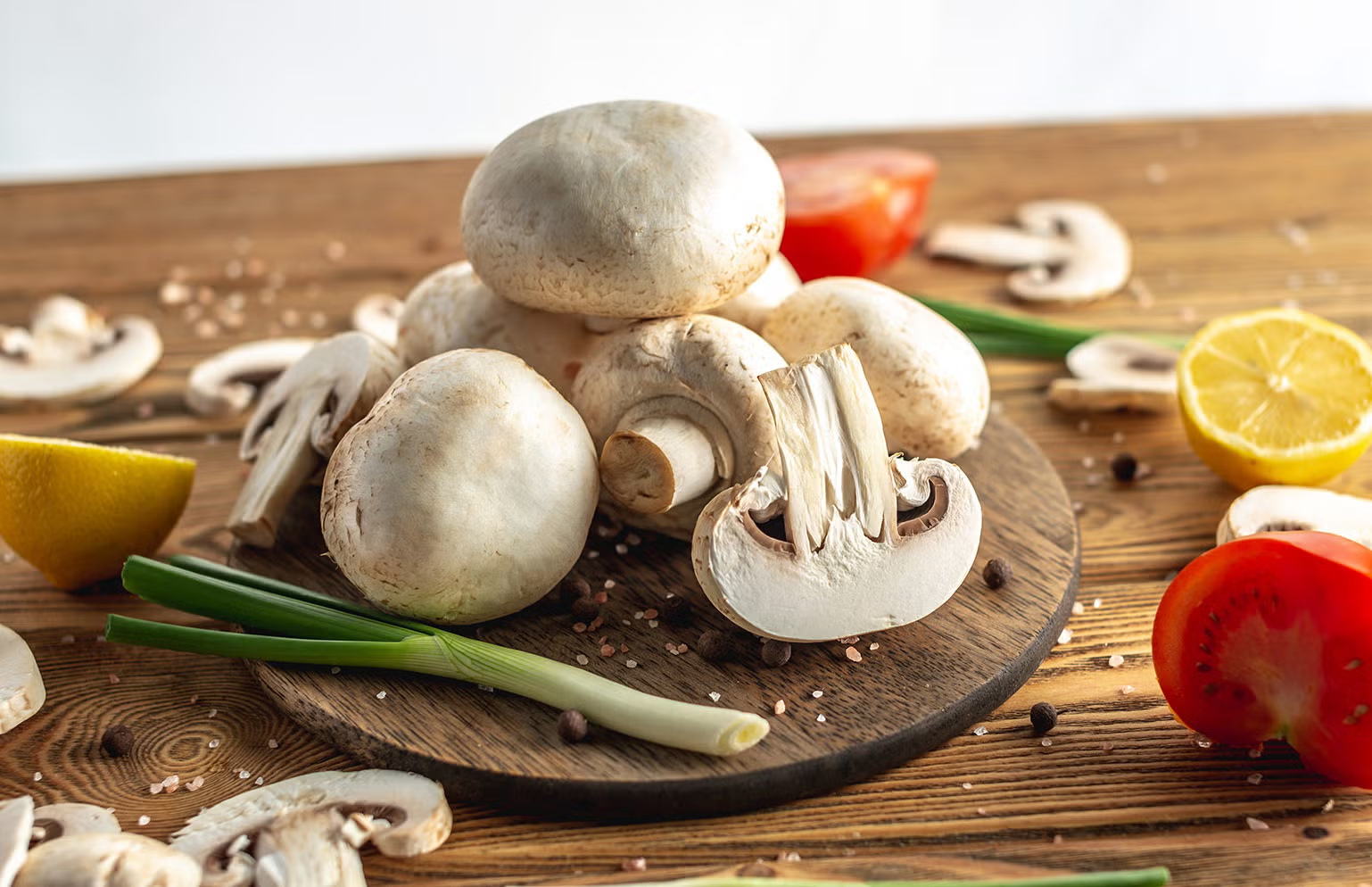
Mushrooms—they’re either loved or loathed. No matter which side you’re on, fungi have been revered for centuries. The ancient Greeks actually referred to mushrooms as “food of the Gods” and have also played a strong role in Chinese culture through traditional Chinese medicine. There’s no doubt that mushrooms pack a powerful nutrition punch and make a great addition to any diet.
WHAT EXACTLY IS A MUSHROOM?
While some may think of them as vegetables, mushrooms are actually fungus, a completely separate type of organism. Rather than creating food from the Sun using photosynthesis like other plants, they need to absorb carbohydrates, fat and proteins by digesting organic substances including wood, soil, dung and leaves.1 This type of food and energy intake makes mushrooms more like animals. Another animal-like feature is their lipid cell membrane made of proteins and fats, which differs from a plant’s typical cellulose fiber cell walls.
With so many extraordinary features, no wonder the seemingly boring mushroom has so much to offer us.
AN EXCEPTIONAL ARRAY OF CARBOHYDRATES
Along with the lipids in its cell membrane, mushroom cell walls also contain chitin. This indigestible carbohydrate is also found in the exoskeleton of insects and crustaceans, but not plants. Chitin is an insoluble fiber and works as a prebiotic, meaning it feeds the beneficial bacteria in our gut which helps to support our digestion.
Fun fact: Chitin is very heat stable, which makes mushrooms very difficult to overcook!
Mushrooms also contain beta-glucan, another prebiotic fiber with the potential to support our immune system.2, 3 But the most abundant carbohydrate in fungi is polysaccharides. These substances have been studied for their antioxidant power and potential to influence the immune system.4
VITAMIN AND MINERAL CONTENT
While many assume mushrooms are bland and nutrient deficient, fungi pack some surprises. Every type of fungus has a slightly different nutrient composition, but many contain copper, pantothenic acid (vitamin B5), B2, B3, selenium, phosphorous and zinc—all packed into a low-calorie package.
Mushrooms pack a few other nutrient surprises.
Vitamin D
Just like humans, mushrooms can make vitamin D when exposed to UV light, potentially making them the only plant to contain this nutrient. Since most store-bought mushrooms are grown in darkness, they do not contain significant levels of vitamin D. Only those exposed to UV radiation during growth or sun-dried after harvest will develop the vitamin.5
Yes, you read that right! Mushrooms can produce vitamin D even after harvest!6 This mean if you are looking for a source of vitamin D (a vegan source, no less), you can make this happen yourself! For best results, slice the mushrooms for more surface area then place in a single layer on a sheet. Cover with plastic wrap and place outdoors in direct sunlight for the 6 hours between 10:00 a.m. and 4:00 p.m. Repeat the next day. Either continue the drying process and store in an air-tight container for later rehydration, or use right away.
In the winter months UV light is not powerful enough to produce vitamin D in people or mushrooms, so try this out in late spring, all summer, or early fall.
Potassium
Potassium is an important electrolyte and plays a significant role in maintaining healthy blood pressure levels. Bananas are known for their potassium content. But did you know that ounce-for-ounce many types of mushrooms have just as much, if not more? For example, portobello has 364 mg of potassium versus the banana’s 358 mg.
MEDICINAL MUSHROOMS
Looking beyond the mushroom’s health benefits for our digestive health and immune function, adaptogenic mushrooms are believed to help the body cope with everyday physical and environmental stress.
For example, reishi and maitake mushrooms have been studied for their effects to support well-being. Shiitake, an adaptogenic mushroom you can find easily at the grocery store, has been found to improve markers of immune health in healthy study participants after 4 weeks.7
PUTTING FUNGI IN TO PLAY
Mushrooms have an earthy, umami flavor. In general, the darker the mushrooms, the meatier or more savory flavor it may have. For this reason, mushrooms such as shiitake and portobello mushrooms are often used as a meat substitute. Portobellos can be marinated then grilled or baked and used as a “burger,” or sliced and sautéed as part of a stir fry. Cremini mushrooms, which are simply baby portobello mushrooms, can be minced in a food processor and sauteed with garlic, onion and other seasoning as a ground beef replacement.
On the lighter side of taste come the white button mushroom. If you’re not a mushroom fan yet, these may be the place you start your fungi journey. Feel that cooked mushrooms are too slimy? Button mushrooms can be eaten raw! Try them with hummus or tossed into a salad. Prefer them cooked? Simply sauteed in butter or oil, season and use as topping for steak or chicken.
What else can you do with them? A pizza topping; tossed into pasta or soup; stuffed with spinach, cheese and topped with breadcrumbs; in quesadillas—the possibilities are endless!
NOT A FAN OF EATING FUNGI?
Don’t worry, there are other ways to take in some of the benefits of mushrooms without having to eat them. There are mushroom teas, mushroom supplements, even tonics and powders. Check out more ways to gain mushroom benefits.
FUNGI TOXICITY
Not all mushrooms found in the wild are safe to eat. In fact, many are toxic. To stay safe, stick to those you can purchase in your local grocery store.









